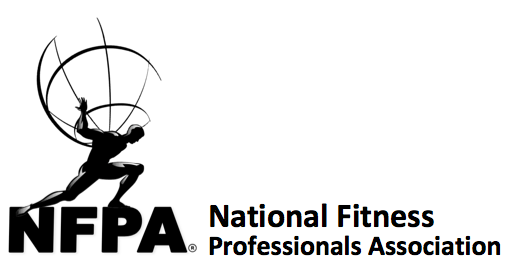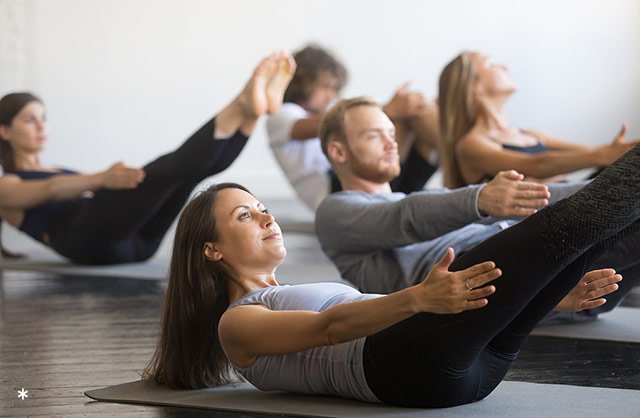high-intensity pilates
strengthening core and more
Pilates has long been celebrated for its ability to improve flexibility, posture, and core strength. However, in recent years, a new trend has emerged within the realm of Pilates – High-Intensity Pilates. This rigorous form of exercise takes the foundational principles of traditional Pilates and amplifies them with added intensity and vigor. In this article, we will delve into the world of High-Intensity Pilates, exploring its benefits, potential risks, and practical applications.
The Evolution of Pilates
Pilates, developed by Joseph Pilates in the early 20th century, was initially designed as a rehabilitation program for injured soldiers. Over time, it has gained popularity as a holistic exercise system, focusing on building a strong core, enhancing flexibility, and promoting mind-body connection. Traditional Pilates is characterized by controlled and precise movements, often performed on specialized equipment such as the reformer or Cadillac.
High-Intensity Pilates, on the other hand, is a modern adaptation that maintains the core principles of Pilates while introducing elements of cardiovascular exercise, strength training, and dynamic movements. This fusion aims to create a more challenging workout that not only strengthens the core but also elevates the heart rate, burns calories, and builds overall muscle strength.
The Benefits of High-Intensity Pilates
1. Enhanced Core Strength
Like traditional Pilates, High-Intensity Pilates places a strong emphasis on core engagement. The increased intensity, however, demands greater stability and control, leading to even more profound improvements in core strength. A strong core is not only aesthetically pleasing but also crucial for maintaining good posture and preventing back pain.
2. Improved Flexibility
High-Intensity Pilates incorporates dynamic stretches and movements that enhance flexibility. These exercises encourage a wider range of motion, making it an excellent choice for individuals looking to improve their overall flexibility and joint mobility.
3. Cardiovascular Conditioning
Unlike traditional Pilates, which primarily focuses on muscular endurance, High-Intensity Pilates incorporates elements of cardiovascular exercise. This added intensity elevates the heart rate, improving cardiovascular health and increasing calorie burn during the workout.
4. Muscle Tone and Endurance
High-Intensity Pilates targets various muscle groups throughout the body, leading to improved muscle tone and endurance. It can help sculpt a lean and toned physique, making it a popular choice among those seeking a full-body workout.
5. Mind-Body Connection
Both traditional and High-Intensity Pilates emphasize the mind-body connection. Practitioners learn to focus on their breath, form, and movement precision, promoting mental relaxation and stress relief.
6. Weight Management
Due to its combination of strength training and cardiovascular exercise, High-Intensity Pilates can aid in weight management by burning calories and increasing metabolic rate.
7. Postural Improvement
High-Intensity Pilates encourages better posture through increased core strength and body awareness. This can be particularly beneficial for individuals who spend long hours sitting at a desk or working in a sedentary environment.
Potential Risks of High-Intensity Pilates
While High-Intensity Pilates offers numerous benefits, it's essential to be aware of potential risks associated with this form of exercise.
1. Overexertion
The intensity of High-Intensity Pilates can lead to overexertion, especially for beginners or individuals with pre-existing health conditions. Pushing too hard without proper form and guidance can result in injury.
2. Risk of Muscle Strain
The dynamic nature of High-Intensity Pilates can increase the risk of muscle strain or injury, particularly if participants do not perform exercises correctly or attempt movements beyond their current fitness level.
3. Joint Stress
Some High-Intensity Pilates exercises can place stress on the joints, especially if individuals have joint issues or poor biomechanics. It's essential to choose appropriate exercises and modify movements as needed to protect the joints.
4. Lack of Individualization
High-Intensity Pilates classes are often conducted in group settings, which may not allow for individualized attention. It's crucial for participants to communicate any specific concerns or limitations to instructors to ensure exercises are modified as necessary.
5. Impact on Recovery
For individuals recovering from injuries or with specific medical conditions, High-Intensity Pilates may not be suitable. Always consult with a healthcare professional before starting a new exercise regimen.
Practical Applications of High-Intensity Pilates
High-Intensity Pilates can be incorporated into various fitness routines and goals. Here are some practical applications:
1. Weight Loss
High-Intensity Pilates can be an effective component of a weight loss program due to its calorie-burning potential and muscle-building benefits.
2. Cross-Training
Athletes from various disciplines can use High-Intensity Pilates as cross-training to improve core strength, flexibility, and injury prevention.
3. Rehabilitation
Under the guidance of a qualified physical therapist or rehabilitation specialist, High-Intensity Pilates can aid in the recovery of specific injuries and conditions, particularly those related to the spine and core.
4. General Fitness
For those seeking overall fitness and improved posture, High-Intensity Pilates offers a comprehensive workout that can be tailored to individual fitness levels.
5. Stress Reduction
The focus on breath and mindfulness in High-Intensity Pilates can help reduce stress and promote relaxation, making it suitable for individuals looking to improve mental well-being.
Summary
High-Intensity Pilates is an evolution of the traditional Pilates method, incorporating increased intensity, cardiovascular elements, and dynamic movements. It offers a range of benefits, including enhanced core strength, improved flexibility, cardiovascular conditioning, and weight management. However, it also comes with potential risks, such as overexertion, muscle strain, and joint stress, which individuals must be aware of and mitigate. Practical applications of High-Intensity Pilates include weight loss, cross-training, rehabilitation, general fitness, and stress reduction.
Before embarking on a High-Intensity Pilates program, it is advisable to consult with a healthcare professional or certified Pilates instructor, especially if you have any underlying health concerns or limitations. Additionally, proper form and technique are crucial to minimizing the risk of injury during High-Intensity Pilates workouts.
Sample High-Intensity Pilates Program
Here is a sample High-Intensity Pilates program suitable for intermediate to advanced practitioners. Remember to warm up before starting and cool down afterward. Perform each exercise with control and focus on proper form:
Warm-up (5-10 minutes): Gentle dynamic stretches, such as arm circles, hip swings, and leg swings, to loosen up the body.
Main Workout (30-40 minutes):
Pilates Hundred: Lie on your back, lift your head, shoulders, and legs off the mat, and pulse your arms up and down for 100 counts. Focus on controlled breath and core engagement.
Plank to Pike: Begin in a forearm plank position and transition into a pike by lifting your hips towards the ceiling, then return to plank position. Repeat 10 times.
Side Plank with Leg Lift: From a side plank position, lift your top leg and hold for 10 seconds. Lower and repeat 10 times on each side.
Pilates Roll-Up: Sit with your legs extended and roll up to touch your toes, then roll back down. Repeat 15 times.
Single-Leg Teaser: Lie on your back, lift one leg towards the ceiling, and roll up into a V-sit, reaching for your toes. Lower with control and switch legs. Repeat 10 times on each leg.
High-Intensity Pilates Cardio Interval: Incorporate 5 minutes of high-intensity cardio, such as jumping jacks or high knees, to elevate your heart rate.
Double Leg Stretch: Lie on your back, bring your knees to your chest, and curl your head and shoulders off the mat. Extend your legs and arms away from your body, then return to the starting position. Repeat 15 times.
Superman: Lie face down, lift your chest, arms, and legs off the mat, then lower. Repeat 15 times.
Side Leg Raises: Lie on your side and lift your top leg as high as comfortable, then lower. Repeat 15 times on each side.
Cool Down (5-10 minutes): Gentle static stretching to release tension in the muscles, focusing on the core, back, and legs.
This sample program is intense and should be adjusted based on individual fitness levels. Always listen to your body and modify exercises as needed to ensure safety and enjoyment during your High-Intensity Pilates workout.

